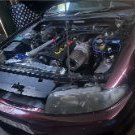Cyl No. 6 Lean Out - Theory Vs Practical
Announcements
-
Similar Content
-
Latest Posts
-
By Yuxuan Carlson · Posted
We supply brand new/USED Cryptocurrency Miners, Bitcoin ATM, GPU Mining Rigs and Graphic Cards at affordable prices + Full Cables , Installation Manuals, Warranty & enjoy %30 Discounts . STOCK PROFITABLE MINERS IM : +39 351 141 7833 IceRiver KS3 Bitmain Antminer L9 (17.6Gh) Bitmain Antminer L7 (9.5Gh) Bitmain Antminer E9 Pro (3.68Gh) Bitmain Antminer S21 Hyd (335Th) Bitmain Antminer S21 Pro (234Th) iPollo V1 Jasminer X4 Bitmain Antminer E9 (2.4Gh) Jasminer X16-P Full 1 year Warranty + 6 months return Policy MOQ - 1pc + Free Shipping - Receipt + PSU Included Test Video - Available / SN CODE For more Info , Contact Fast Response Dm WatsApp : +39 351 141 7833 -
At least, according to this study. https://www.caranddriver.com/news/a60983144/study-loud-exhaust-psychotic/
-
There isn't that many cars yet that are using electric coolant pumps, but they are slowly becoming more common, especially in the euro brands. back in 2009, they were quite rare, pretty much all were either timing chain or accessory belt driven. That said, the VQ37VHR isn't an uncommon engine, so any decent mechanic should be able to replace the water pump. I don't live in NSW, so can't make any suggestions.
-
I do not think that the return pipe could be the cause of your particular troubles, unless perchance it is leaking in a lot of unfiltered and unmetered air (assuming your ECU is still using AFMs). And then it could be very bad, but it shouldn't prevent you making boost. Blow then engine up from running lean? Sure. But it would make boost. You really needed to disconnect this thing from the turbo inlets and close those inlet ports off a year ago, and you should do it now.
-
Pressure Ratio = 2. ie, 1 bar of boost (assuming 1 bat absolute pressure at the compressor inlet). This is relevant because compressor maps do not have "boost" up the y-axis. They have pressure ratio.
-






Recommended Posts
Create an account or sign in to comment
You need to be a member in order to leave a comment
Create an account
Sign up for a new account in our community. It's easy!
Register a new accountSign in
Already have an account? Sign in here.
Sign In Now